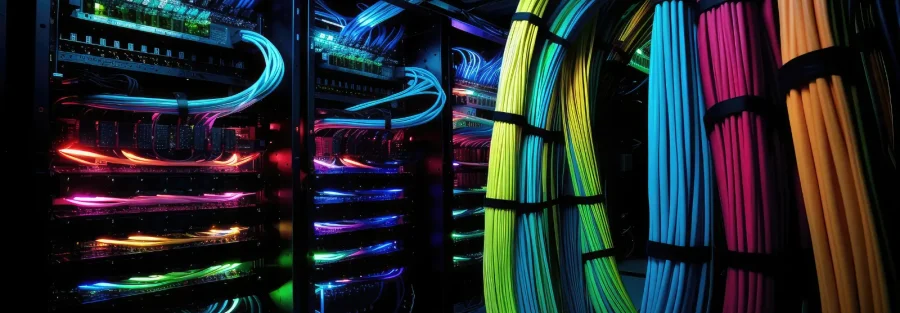Introduction
Cities are about to inherit a surprising new utility: heat from the machines that run our apps. As edge computing and 5G push thousands of micro data centers closer to users, the low-grade thermal energy those servers emit is becoming a deliberately captured, monetized resource not waste. This is more than a sustainability talking point; it’s an emerging urban infrastructure strategy that ties together digital growth, energy policy and real-world social benefits. The math is simple, the shift is practical, and the timing is urgent: global data center expansion is accelerating while cities search for low-carbon heating solutions.
Data Centers Meet Climate Imperatives
Three trends converge to make data-center heat reuse viable. First, the data center build-out remains intense: industry estimates put roughly 10 GW of hyperscale/colocation capacity breaking ground in 2025 alone an order of magnitude expansion in physical infrastructure and an immediate source of heat near population centers. Second, edge deployments smaller sites placed in cities for low latency are multiplying, creating hundreds of distributed heat sources rather than one isolated campus. Market forecasts put the global edge data-center market firmly into the tens of billions and growing rapidly, a sign that compute will be sited where people live and work. Third, energy and climate pressure demand creative decarbonization: data centers already account for a material share of electricity demand, and policy makers are keen to convert that consumption into public value rather than pure externality.
Heat-as-a-Service: How It Works
At a technical level, the concept is straightforward: server racks produce heat; heat exchangers and heat pumps capture and raise its temperature; insulated piping carries that heat into a district loop, greenhouse, factory or municipal building. Practically, integrating a data center into a heating network requires alignment on timing (compute loads vary), redundancy (data centers need cooling guarantees), and contract structure (long-term heat-purchase agreements). Operators can create a new revenue stream “Heat-as-a-Service” while cities obtain low-carbon baseload heat that offsets fossil fuel boilers. The complexity lies in retrofitting, regulation and aligning incentives, but a growing set of pilot projects proves the model at scale.
Nordic Pilots: Proof in Practice
This is not hypothetical. Nordic utilities and hyperscalers are already partnering to route server heat into district systems. Microsoft’s collaboration with Finnish utility Fortum, for example, is designed to recover data-center heat for municipal networks a model intended to be replicated across cold-climate regions where district heating infrastructure exists. In Denmark, a major hyperscale data center supplies thousands of households through existing district heating lines a live case where digital demand and urban thermal needs are married. These projects demonstrate that, under the right conditions (dense heat demand, existing piping networks, and regulatory support), waste heat is both usable and valuable.
Urban Planning Reimagined
Urban planners face a new question: should data centers be sited as utilities, not nuisances? If server halls become heat hubs, zoning and permitting must evolve. Cities could zone corridors for “heat capture” or require new compute facilities to offer heat purchase agreements to nearby social housing, schools or community centers. The social potential is compelling: pilots show heat reuse can lower household heating bills materially and target energy poverty pockets turning a corporate externality into a public good. But equity must be front of mind: who gets preferential access to low-cost heat, and how are terms set to avoid private capture of public benefit?
Beyond Homes: Agriculture and Industry
Beyond homes, data-center heat unlocks adjacent economic uses. Greenhouses benefit from stable, low-grade heat and CO₂, enabling year-round production with reduced fossil inputs; small manufacturers can stabilize processes that require warm water; municipal snow-melt systems and public pools can reduce operating costs. In cold regions, a single data-center cluster could conceivably displace large shares of seasonal heating demand for multiple facilities an especially attractive proposition where renewables supply electricity but heating remains fossil dominated.
Limits and Trade-Offs
The model has limits. Heat demand is seasonal in many markets peak compute (driven by AI, streaming) doesn’t always align with peak heating needs so storage or hybridization with other heat sources is often necessary. Carbon accounting is thorny: does reusing heat count as emissions avoidance or relocation? Critics also warn of a rebound effect: if heat becomes cheap and abundant, it could enable more energy-intensive digital services, offsetting decarbonization gains. Transparency and robust metrics will be essential to avoid greenwash.
Scaling Heat Reuse at City Level
Policymakers can accelerate safe, equitable deployment in a few pragmatic ways: require thermal-impact assessments in data-center permitting; incentivize heat-purchase agreements through tax credits or capex support; invest in small-scale thermal storage and micro-grid connectors; and standardize heat attribution rules so municipalities and operators can account for avoided emissions reliably. Where district heating networks already exist (as in many Northern European cities), simple regulatory nudges could unlock rapid scale. Where networks are absent, pilot hubs (e.g., industrial parks) can build the business case.
Conclusion
Edge data centers will not solve our climate challenge alone, but they offer a rare convergence of commercial motive and public benefit. By treating server heat as an asset rather than a waste stream, cities can convert digital growth into distributed warmth, local jobs and lower emissions provided contracts, accounting and equity are handled up front. The image is telling: the next time your app loads in milliseconds, somewhere nearby that tiny latency gain may also be keeping a greenhouse warm or a community center open through winter. That’s the kind of infrastructure story investors, planners and citizens will want to write into the next decade of urban life.





